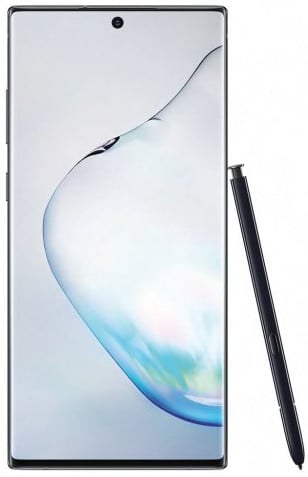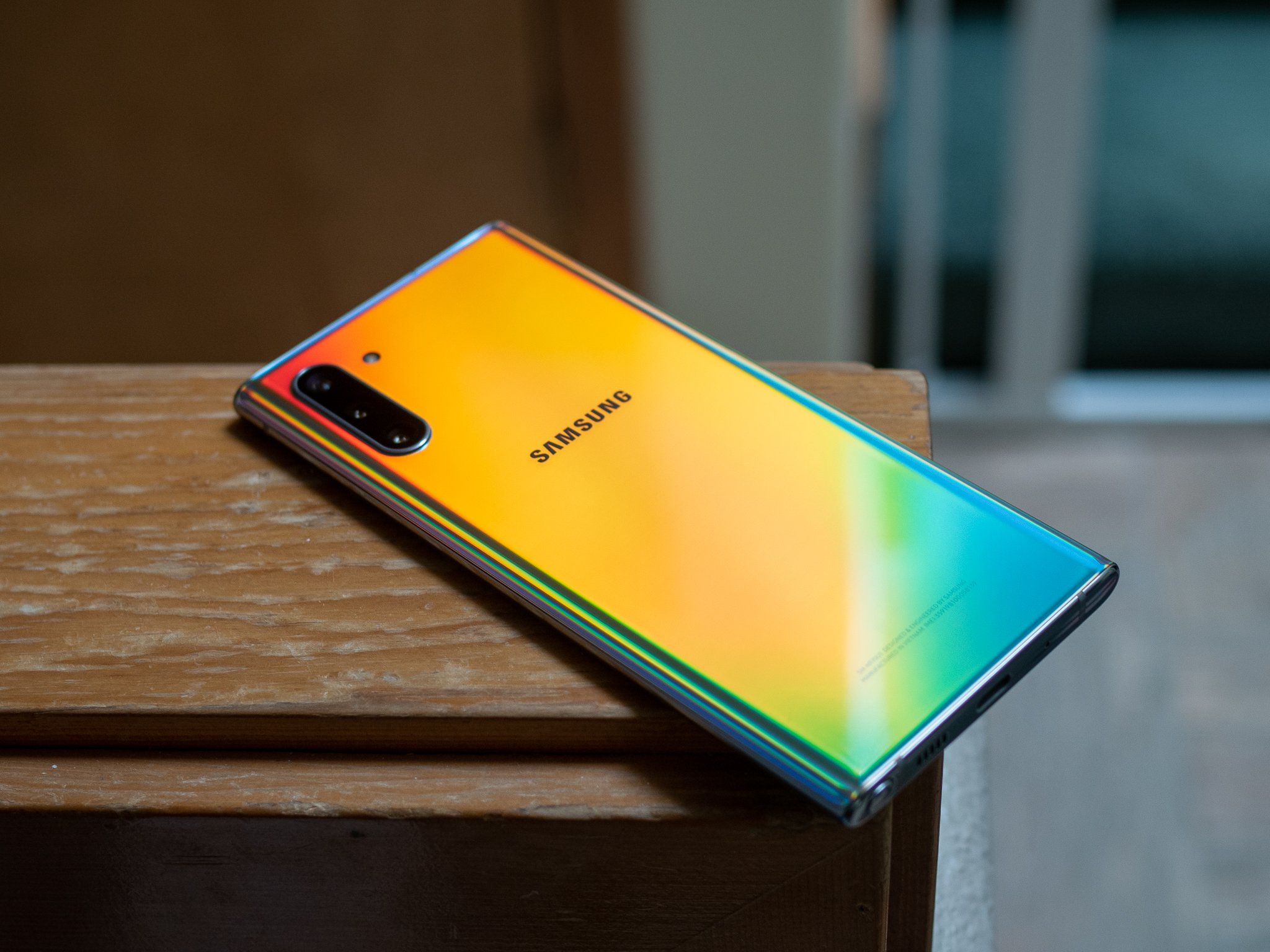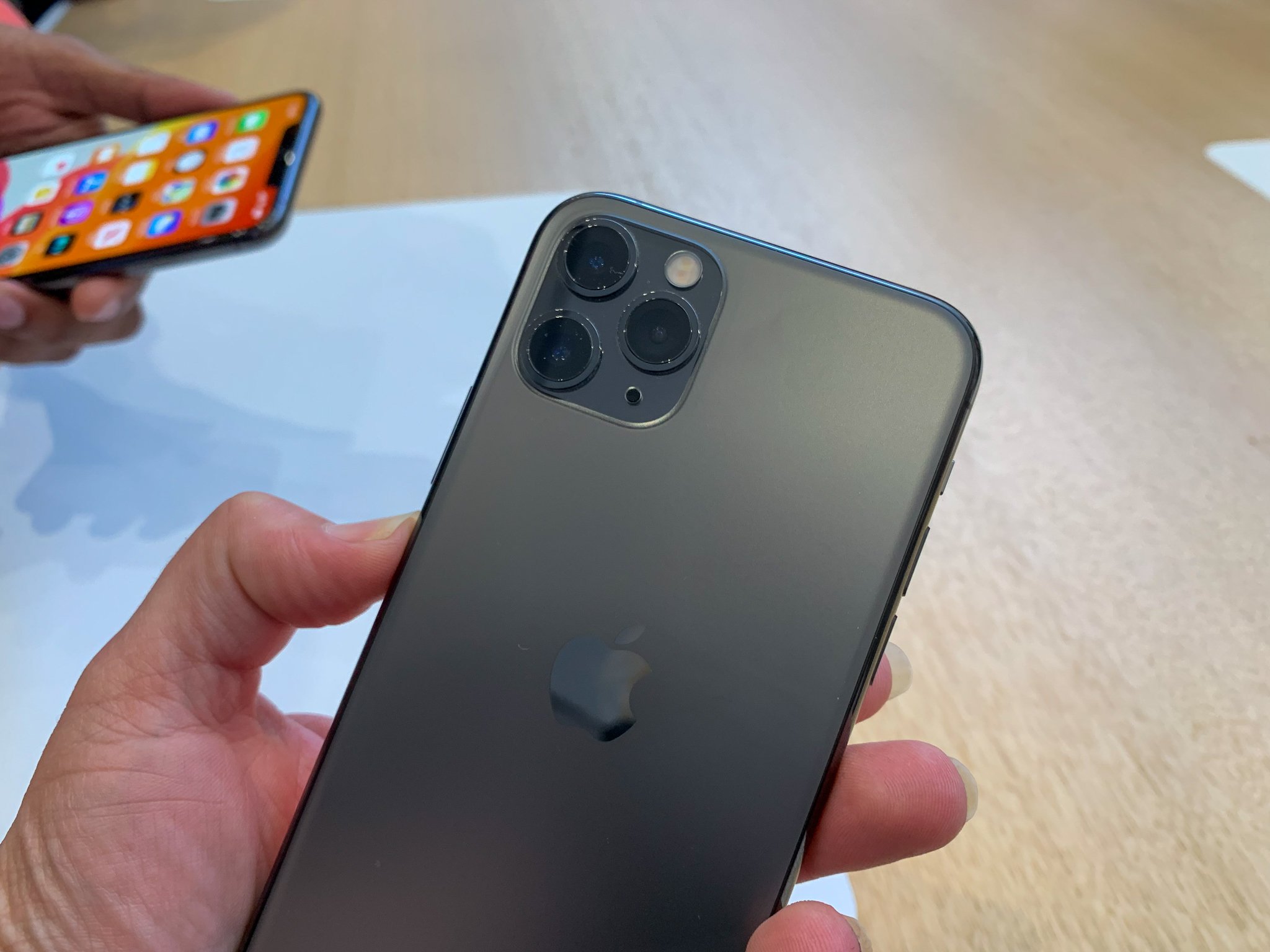We mostly focus on Android phones, but many of us dabble with the other side from time to time to stay acquainted with the pros and cons of each platform.
The best of Android
Galaxy Note 10+
Pros
- 256GB of expandable storage
- Three powerful cameras
- Multipurpose S Pen tool
- Incredible edge-to-edge display
- Great battery life and fast charging
Cons
- No headphone jack
- Low-light camera quality is weak
The Galaxy Note 10+ has a long-lasting battery, three powerful cameras, and of course, the mighty S Pen. It's easily one of the best Android phones around, and beats out the iPhone with tweakable software, expandable storage, and lightning-fast charging.
Over the garden wall
iPhone 11 Pro Max
Pros
- Works well with other Apple products
- Three powerful cameras
- Dual SIM-capable with eSIM
- Seamless transitioning between lenses
- Improved Face ID
Cons
- No headphone jack
- Starts at just 64GB
The iPhone 11 Pro Max is Apple's biggest, most powerful phone yet, with three great cameras and the promise of all-day battery life. You'll need to pay extra for worthwhile storage, but multi-cam recording and conveniences like Airdrop make it a great option.
The Galaxy Note 10+ and the iPhone 11 Pro Max are the two top-end phones from each respective platform. Software aside, there's a surprising amount of similarities between the two phones, from triple cameras to large, nearly bezel-less displays and high quality designs made up of metal and glass. So which one is a better fit for most people?
The battle of Android vs. iOS continues
By now you've likely made up your mind on whether your prefer Android or iOS (you can guess which we prefer!), but it's hard to debate that both Samsung and Apple are making incredible phones in 2019 — even if they're for different people. The recently released Galaxy Note 10+ is already one of the very best Android phones money can buy, with powerful hardware and three great cameras.
There's more to it than the software each phone uses, but it's certainly an important factor.
That's not especially new for Samsung; the Note 10+ is largely similar to the Galaxy S10+ before it, which featured nearly identical specs and the same set of wide, ultra-wide, and telephoto lenses. The Galaxy Note 10+ does feature a new futuristic design, however, with a nearly edge-to-edge display that wraps around the curved glass, obscured only by a small hole-punch cutout at the top.
The iPhone 11 Pro Max takes a lot of design inspiration from its predecessor, as well. The front is visually indistinguishable from that of the iPhone XS Max before it, though the rear design has been refreshed with a new frosted glass look and a significantly larger camera bump that houses the first triple-camera array on an iPhone. Just as with the Galaxy Note 10+, the iPhone 11 Pro Max features wide, ultra-wide, and telephoto cameras.
Storage is a weak point for the iPhone.
The short of is this: both phones are incredibly well-made, each with its own unique design and similar triple camera arrangements. You'll get dual speakers on either phone, and neither features a 3.5mm headphone jack — the biggest hardware difference is the charging/data port. While the Note 10+ features the same USB-C port you'll find on most gadgets made in the last few years, the iPhone 11 Pro Max sticks with Apple's proprietary Lightning connector.
One major win for the Galaxy Note 10+ is its microSD slot for easily expanding the built-in 256GB of storage — with the iPhone, you're stuck with the storage you pay for, starting at a measly 64GB. That's a quarter of the storage for the same price, though the iPhone at the very least features dual SIM compatibility through use of its eSIM, which can be a big plus for frequent travelers and business users.
Without touching too much on software (which, again, you've undoubtedly already come to your own conclusions on), iOS is still a great fit for those who already have other Apple devices. Convenient features like Airdrop and iMessage play as big a role as ever in drawing users into the Apple ecosystem, though there are of course similar services on Android. The Galaxy Note 10+ runs Samsung's One UI over Android 9 Pie, which features a built-in video editor, plenty of customizability, and powerful camera controls.
Speaking of cameras, while both phones offer the same choices of lenses, you'll get very different experiences with each. The Galaxy Note 10+ has plenty of useful tools that benefit both photo and video; along with manual camera controls, you get ultra-stabilized video, focused audio zooming, and even live focus video that adds depth behind your subject. You can also use the S Pen as a remote shutter for capturing photos and videos without touching the screen.
As far as cameras go, you're choosing between manual controls and multi-cam recording.
The iPhone 11 Pro Max doesn't offer nearly as many controls; you can't adjust things like shutter speed, focus, or aperture manually through the built-in camera software. But Apple is making use of its powerful new A13 Bionic chip to prime each of its lenses in the background while you shoot, allowing you to switch lenses while filming without any noticeable change in color or exposure. Through the popular third-party app Filmic Pro, you can even film with all three rear lenses at once (and even the front camera!), saving each feed as a separate file to edit to your liking later.
Both phones promise all-day battery life, and while we haven't yet had the chance to put the iPhone 11 Pro Max to the test, the Galaxy Note 10+ certainly lives up to its claims. A huge victory for the Note comes in the form of its charging, supporting up to 45W with a wired connection. Even its 15W wireless charging nearly matches the 18W wired charging of the iPhone 11 Pro Max.
At the end of the day, there's no right or wrong choice here. Both phones are incredibly powerful, and each represents the very best of its respective manufacturer and platform. If you want the best interoperability with other Apple devices, or you want the ability to film with all of your phone's cameras at once, the iPhone 11 Pro Max is the best phone you can buy. If, on the other hand, you like to customize your phone's software to your heart's content, or you value the hardware amenities like expandable storage and the S Pen, the Galaxy Note 10+ will take you further for your money.
The best of Android
Galaxy Note 10+
One of the best Android experiences around.
The Galaxy Note 10+ has a long-lasting battery, three powerful cameras, and of course, the mighty S Pen. It's easily one of the best Android phones around, and beats out the iPhone with tweakable software, expandable storage, and lightning-fast charging.
Over the garden wall
iPhone 11 Pro Max
Spare no expense.
The iPhone 11 Pro Max is Apple's biggest, most powerful phone yet, with three great cameras and the promise of all-day battery life. You'll need to pay extra for worthwhile storage, but multi-cam recording and conveniences like Airdrop make it a great option.




0 Response to "You Can See More: Galaxy Note 10+ vs. iPhone 11 Pro Max: Which should you buy?"
Post a Comment